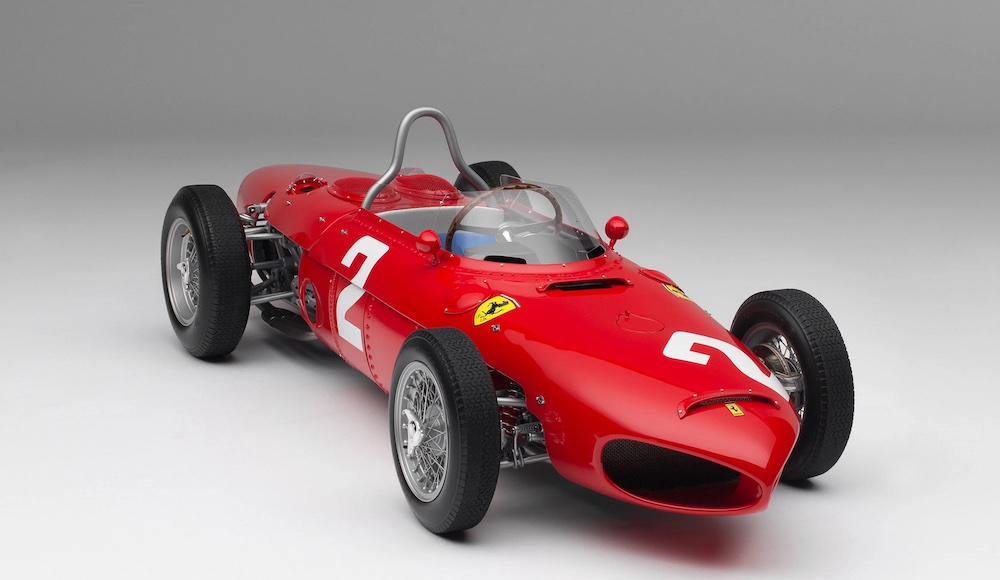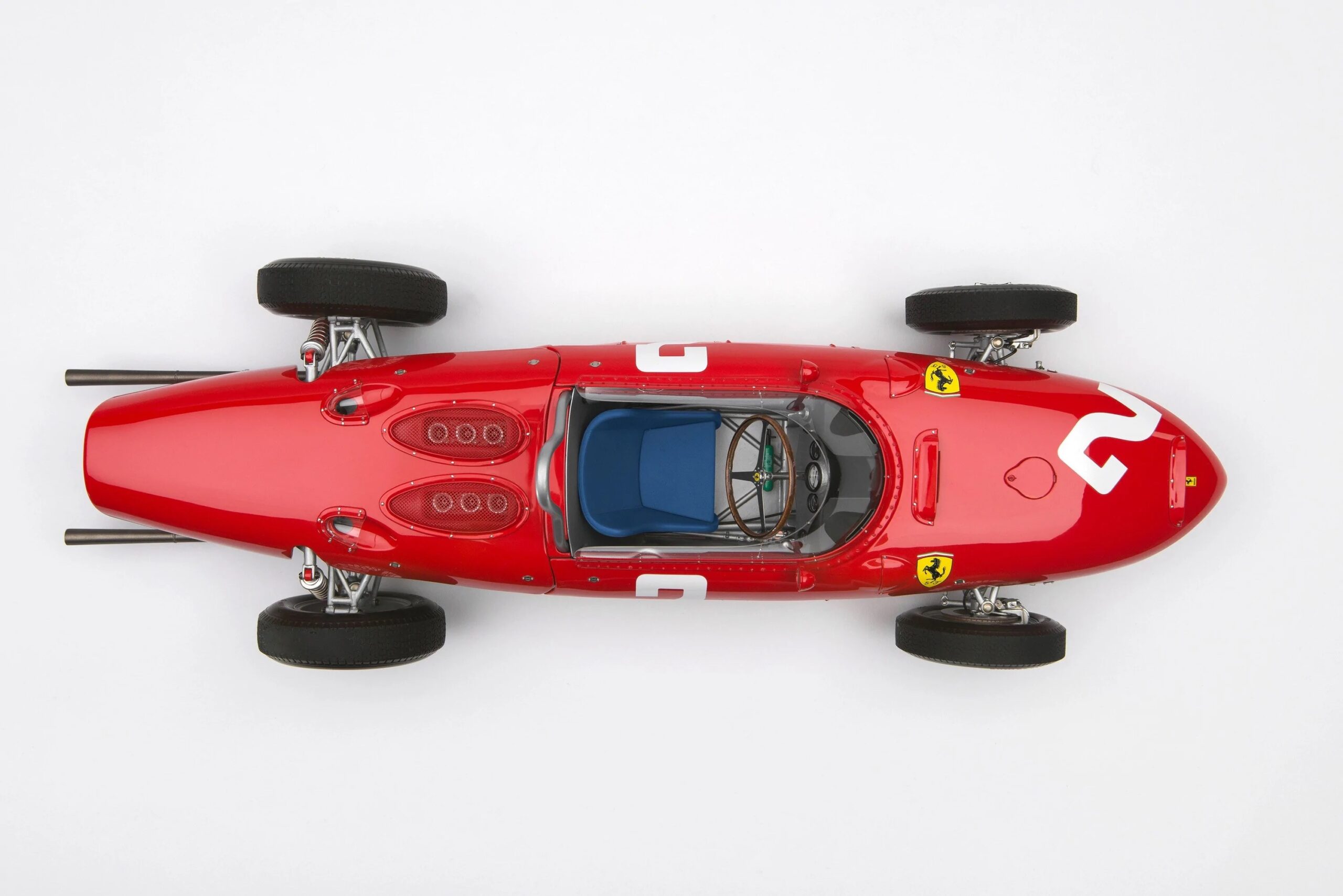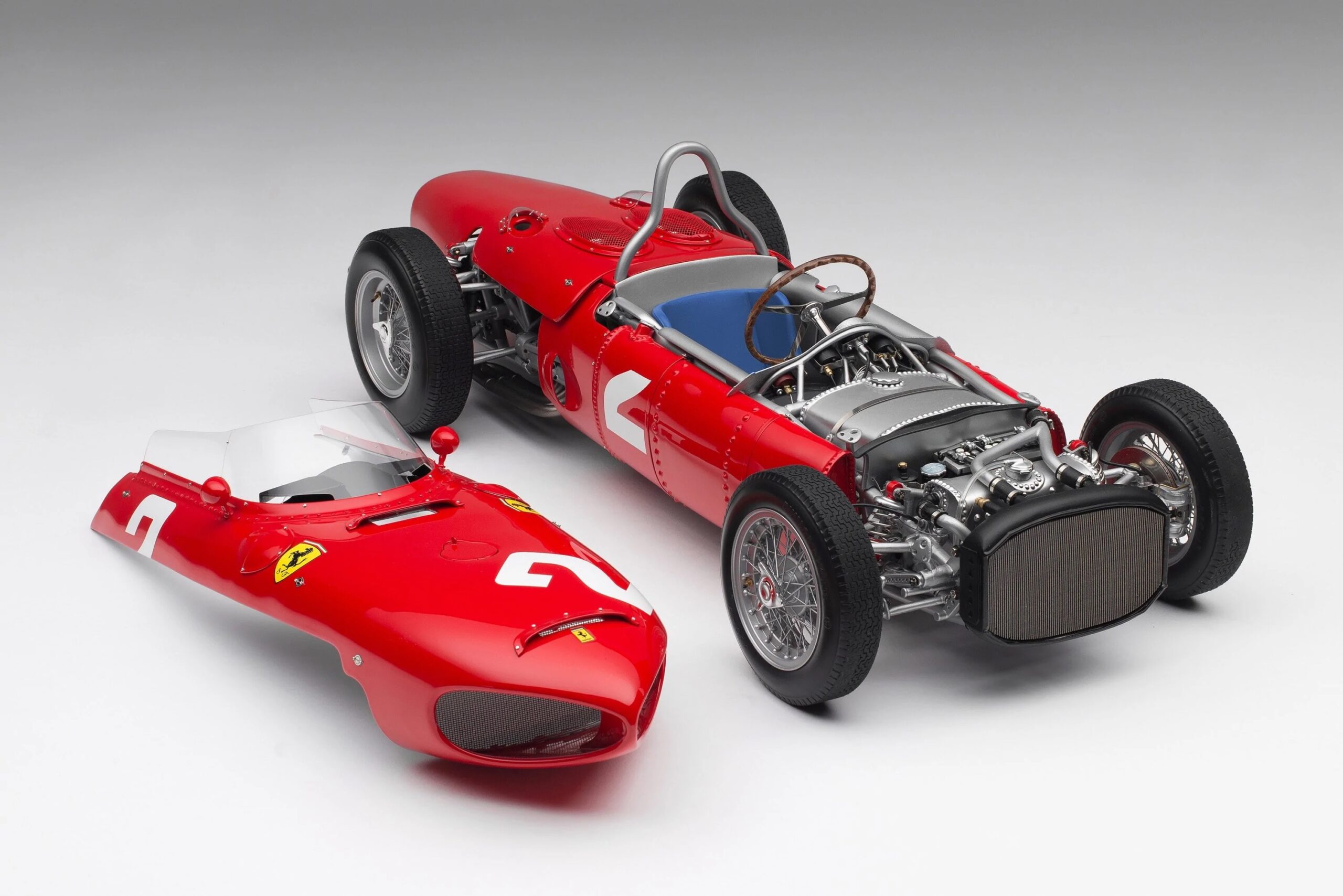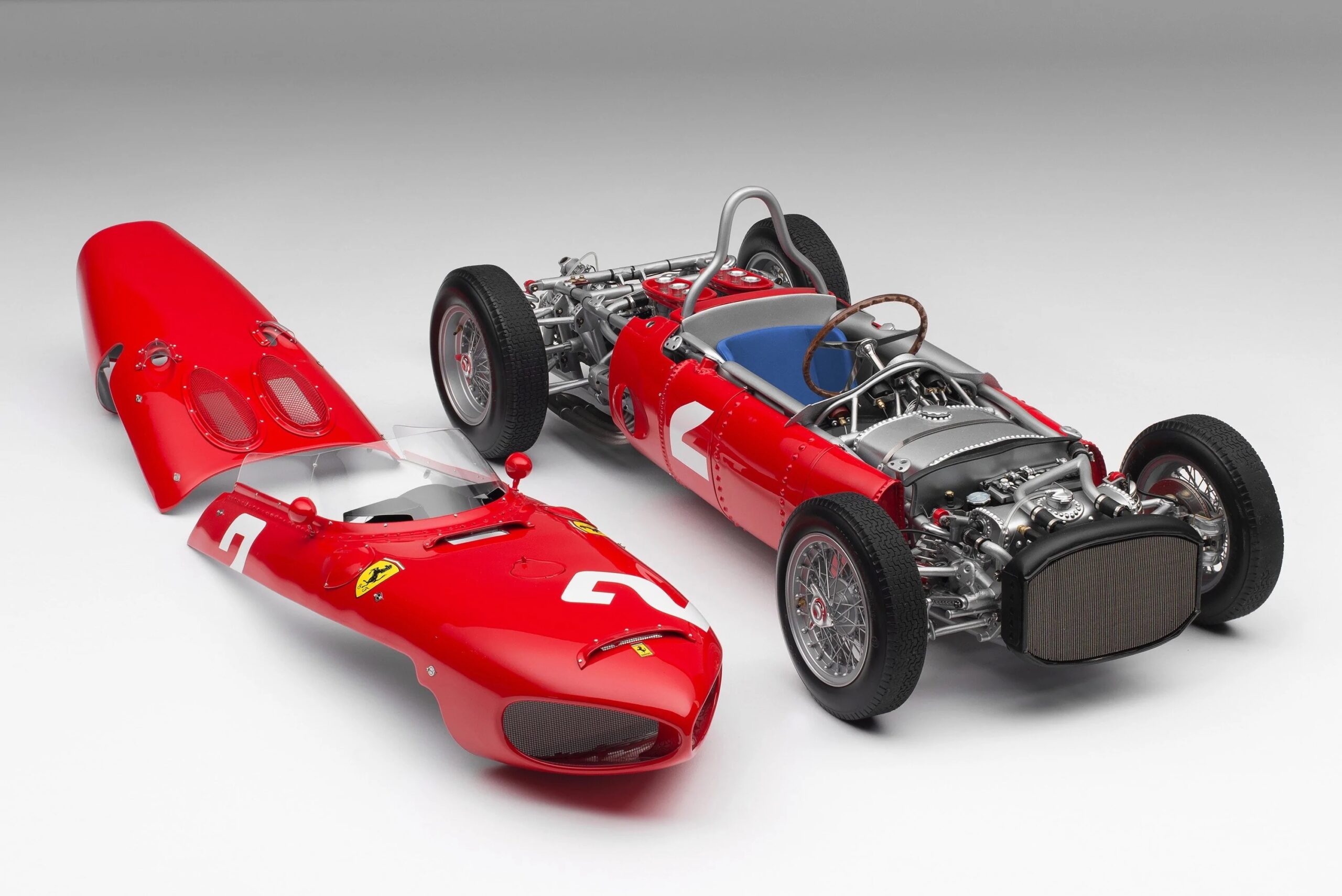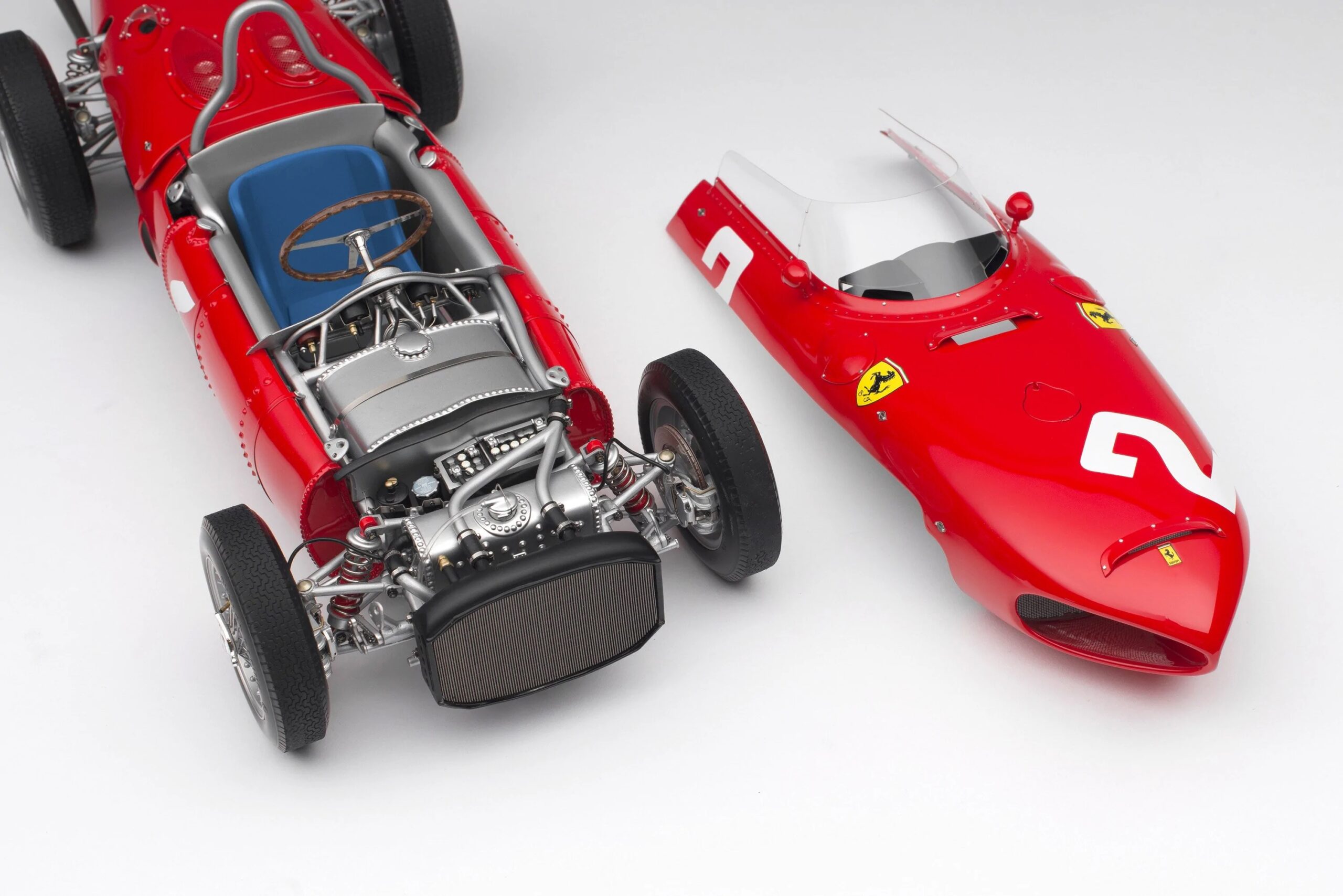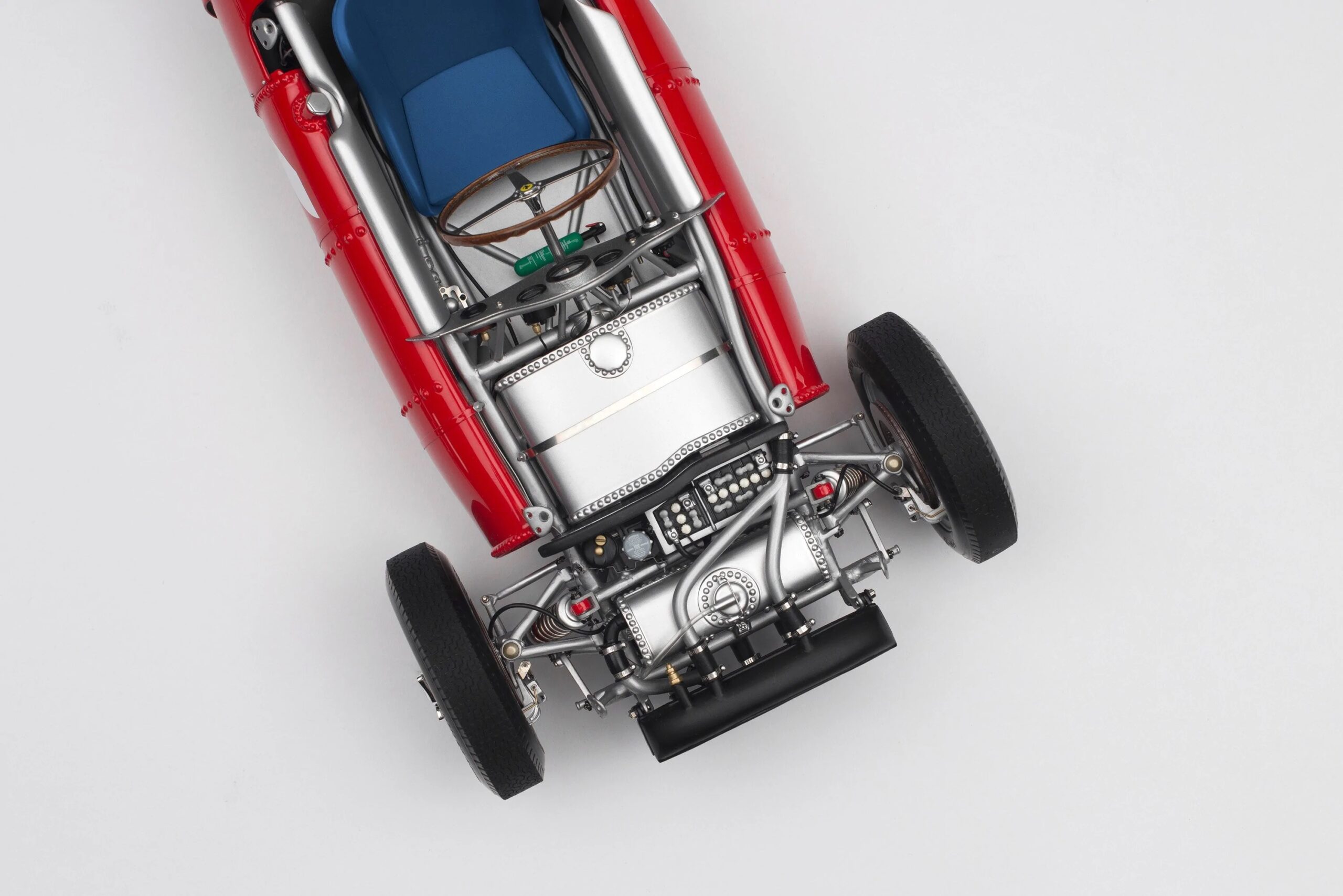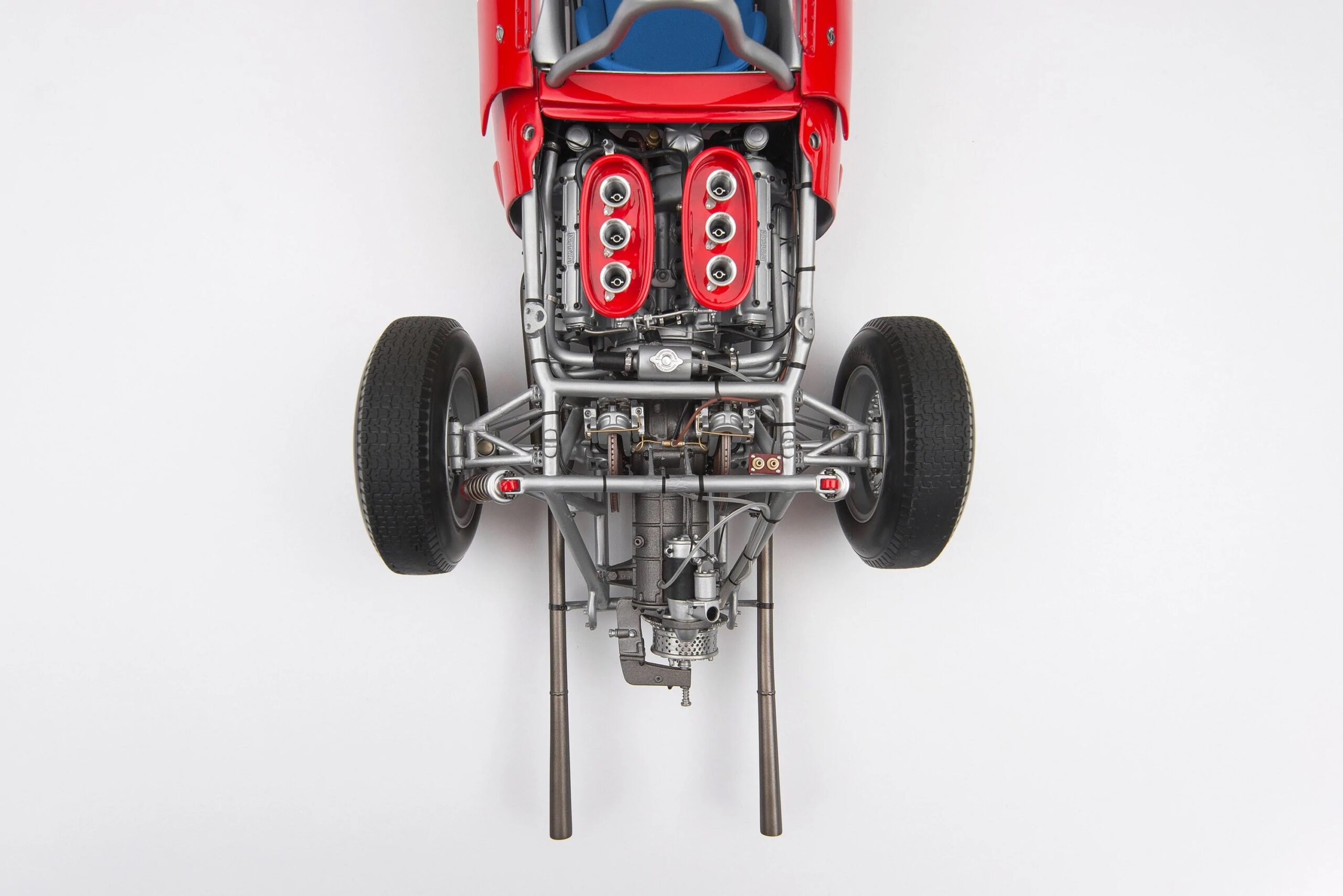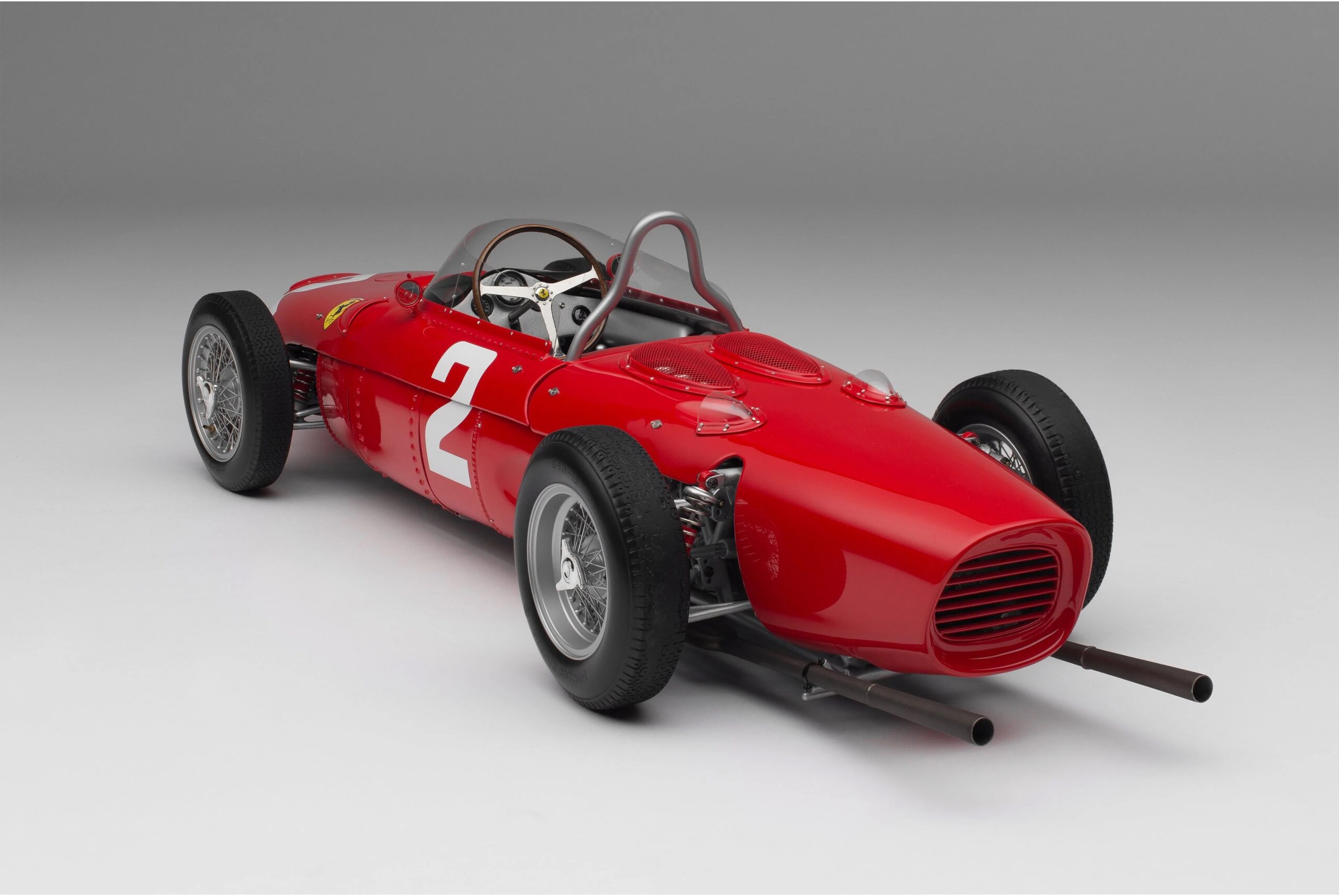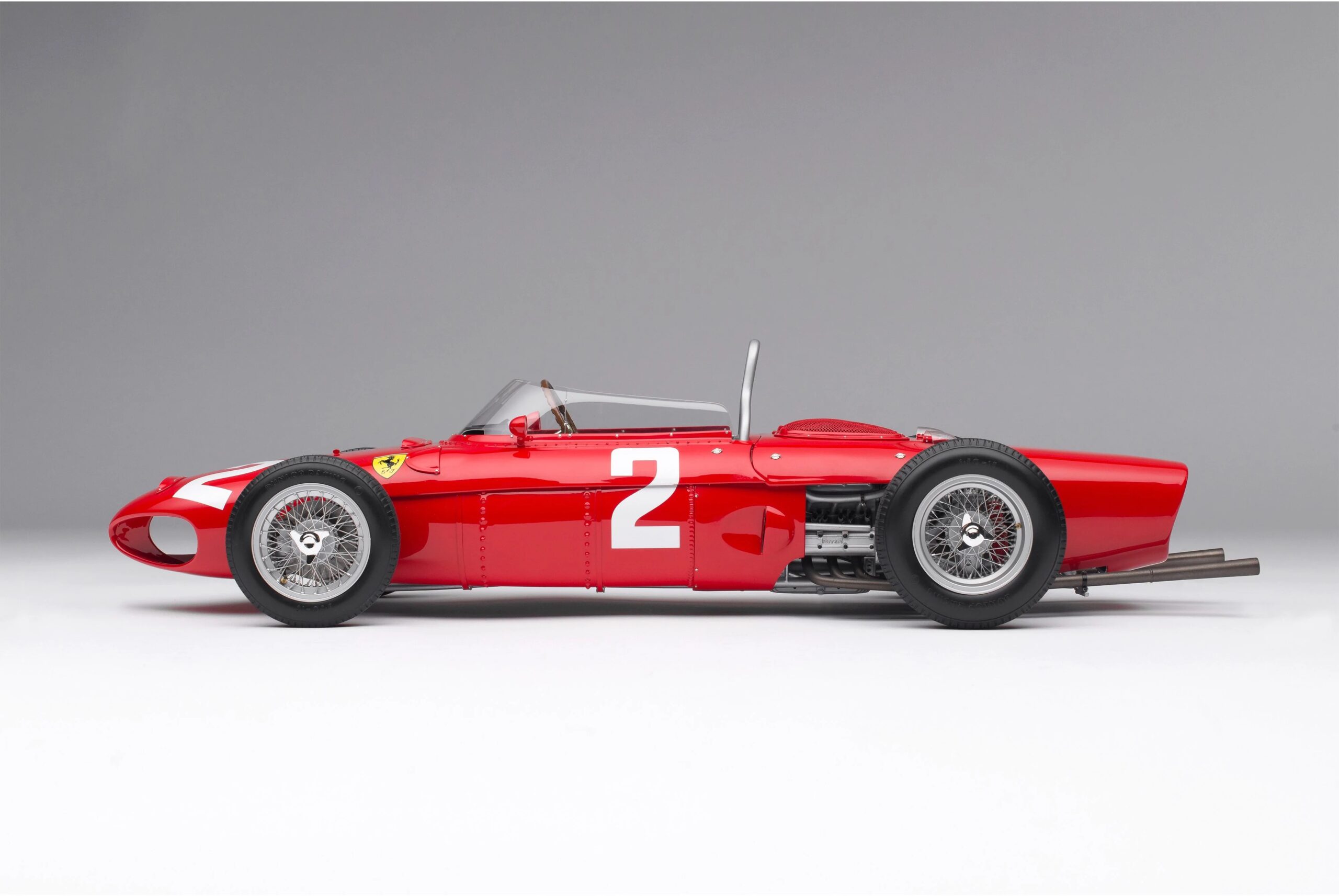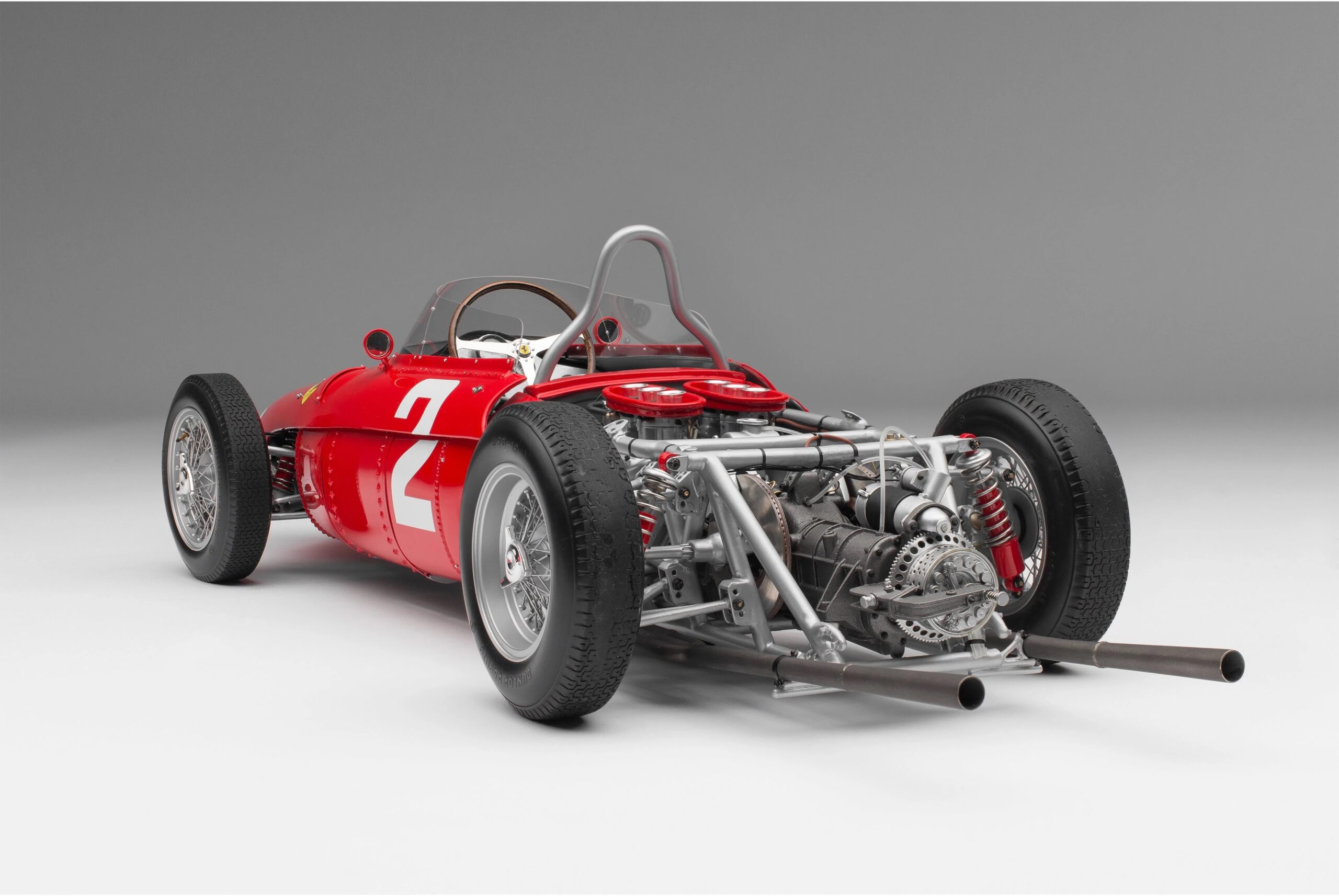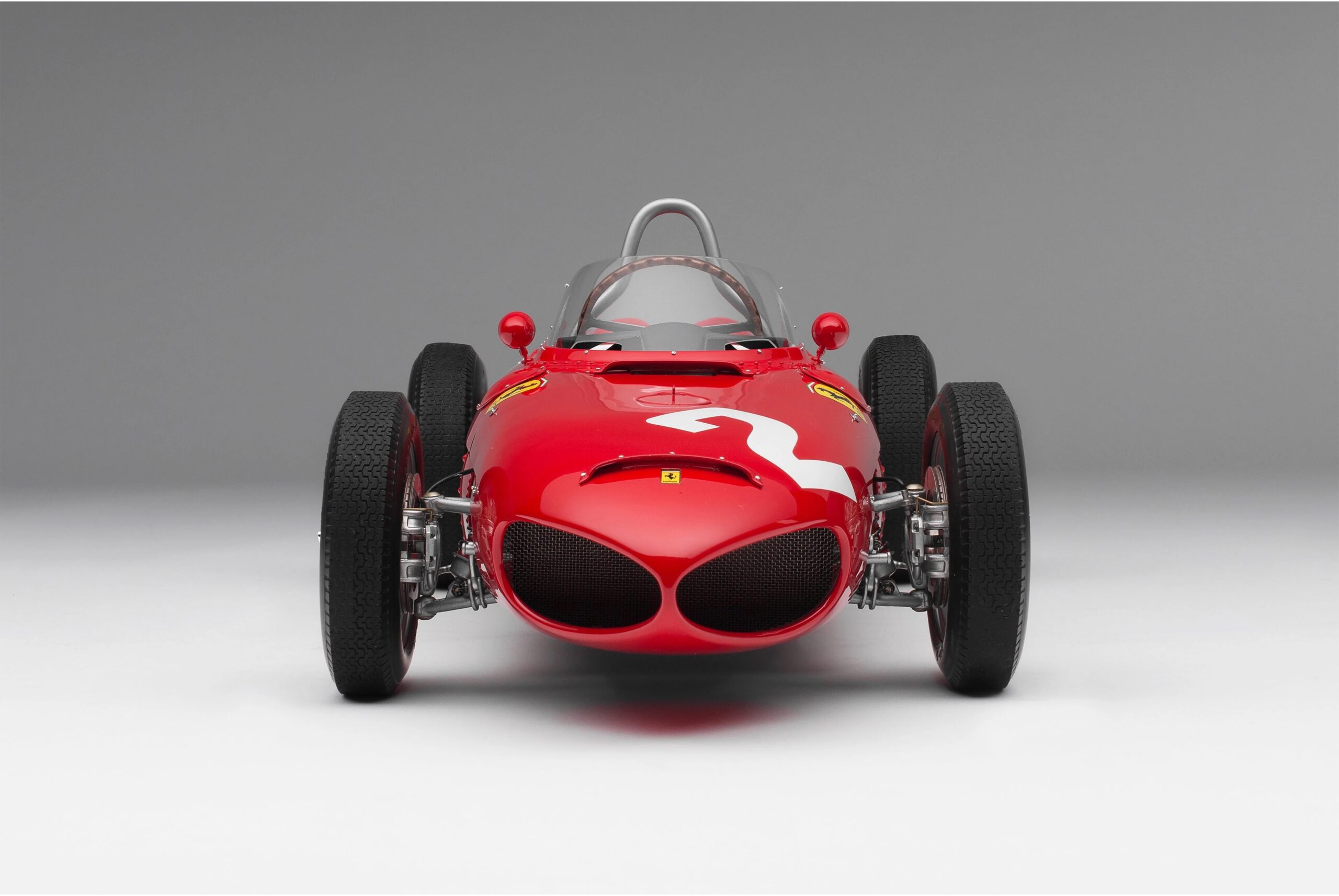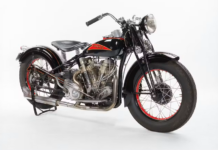The first Scuderia Ferrari first mid-engined Formula 1 machine to be driven in true competition, the evocative Ferrari 156 F1 stands tall in amongst the halls of Maranello racing legends as one of the most dominant cars in history. Affectionally dubbed the ‘Sharknose’, due to its unusual front air intakes, the 156 F1 was built for the 1961 season and subsequently delivered the Italians their first Constructors’ Championship and fifth Drivers’ Championship titles.
As successful as its legend is, the 156 F1, as all grand narratives do, also suffered great tragedy; German racer Wolfgang von Trips was fatally injured alongside fifteen spectators when he crashed at the championship-defining Italian Grand Prix.
The 156 F1 was the result of a brief given by Enzo Ferrari to new Technical Director Carlo Chiti, with the clear instruction to create a car capable of winning the Formula 1 World Championship under the new, downsized 1.5 litre engine regulations. It was developed from the previous year’s 156 F2, designed for Formula 2 racing, and 156 P, which was the prototype car adapted for Formula 1 regulations. The single-seater boasted a simple yet clever design, with a tubular chassis dressed in aluminium panels. A new lightweight 120-degree V6 engine was developed for the new rules, with the resulting angle of the cylinder blocks providing a lower centre of gravity. The car looked different too, thanks to a slender nose cone and two angled air-intakes that defined its new moniker.
The first year of the 1.5-litre formula was dominated by a well-prepared Ferrari team, and the ‘Sharknose’ won five of the eight races in the 1961 season. American Phil Hill was victorious in Belgium and Italy, German Count Wolfgang von Trips in the Dutch and British Grand Prix, whilst privateer Giancarlo Baghetti took his first and only official race win in France. Only Stirling Moss, in an outdated Lotus-Climax, was able to better the Ferraris in Monaco and Germany, in which only his skills could offset the Ferrari power advantage. Innes Ireland in another Lotus also won the United States Grand Prix, but only after Ferrari didn’t enter the race. The ‘Sharknose’s’ greatest moment came in the race in Belgium as the Hill lead home Von Trips, Richie Ginther and Olivier Gendebien for a staggering 1-2-3-4 victory. Two races later, the team would score a further 1-2-3 as Von Trips finished ahead of Hill and Ginther at the British Grand Prix.
The battle for the title culminated at the penultimate race in Monza, with Von Trips leading Hill in the standings by four points. Tragically, however, Von Trips collided with Jim Clark on the second lap, launching his car off the track into the banking that spectators were stood upon, claiming the lives of fifteen as well as Von Trips. Hill, unaware of his friend and teammate’s fate, won the race and, in doing so, became the first American to win the Formula 1 Drivers’ Championship, but his joy soon vanished when he learned the terrible news. Ferrari had also sealed their first Constructor’s Championship, and subsequently withdrew from the season’s final race in the United States.
Overall, the Ferrari 156 F1 ‘Sharknose’ earned five victories, nine further podiums, six pole positions and five fastest laps, scoring 40 points and winning the World Championship of Drivers and International Cup for Formula One Manufacturers during the 1961 Formula 1 season. Such was the strength of the 156 F1, that it still regularly contested and achieved victories and podiums into the 1963 and 1964 seasons.
This fine 1:8 scale model of the Ferrari 156 F1 ‘Sharknose’ has been handcrafted and finished in our workshops with the co-operation and assistance of Ferrari regarding original finishes, materials, archive imagery and drawings. The use of supremely accurate digital scanning of the original car has allowed us to perfectly recreate every detail at scale. Furthermore, it has undergone detailed scrutiny by both engineering and design teams to ensure complete accuracy of representation.
Click here for further information
more information: amalgamcollection.com

